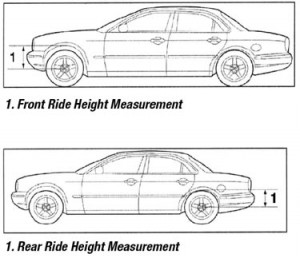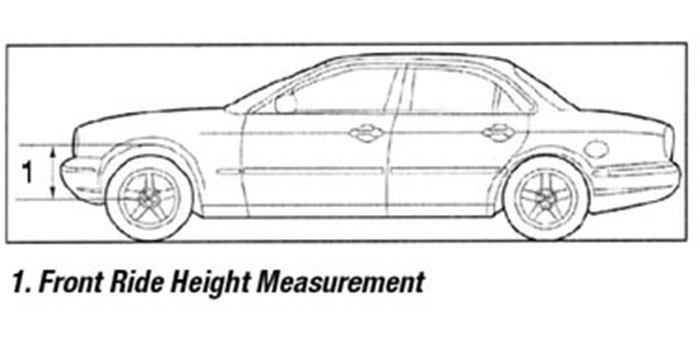 Air ride replacement is not always plug and play. Most of the time after an air ride component is replaced, a few extra steps might be required before the vehicle is completely repaired.
Air ride replacement is not always plug and play. Most of the time after an air ride component is replaced, a few extra steps might be required before the vehicle is completely repaired.
I ran into one of these situations with a 2004 Jaguar XJ8. The customer was complaining that the headlights were not what they once were after a rear air strut, control arm and ride height sensor were replaced after striking a curb. The system did not have any codes or signs of trouble after the unit was replaced. The vehicle did the usual self-calibration at start-up with the rear lifting first, followed by the front, while the headlight motors moved the headlights down, and then up, to the correct height.
At first, I suspected the problem might be the HID ballast units that also control the headlight motors, but the units were working fine along with the leveling actuator. The wiring diagram, however, revealed a vital clue to the root cause of the problem.
The XJ8 — as with many other air ride-equipped vehicles like Audi, Saab and Mercedes-Benz — shares information about the vehicle’s ride height with the lighting and/or headlight modules that control the position of the headlight on HID-equipped vehicles.
The service information and scan tool showed a calibration procedure for the air ride and HID systems that resets the pressure sensors, solenoids and ride height sensors. The procedures involved checking the height, driving slowly and following the prompts from the software.
After the calibrations were completed, the headlight pattern was fixed. A deeper probe into the scan tool software revealed a multitude of tests to check ride height decay and other bidirectional tests to confirm the operation of other air ride components.
Mercedes-Benz Airmatic systems require a scan tool to calibrate the air ride system. This might require measuring the angle or the lower control arms. The necessary tool can be used to inflate the newly installed air bag.
Courtesy Import Car.














